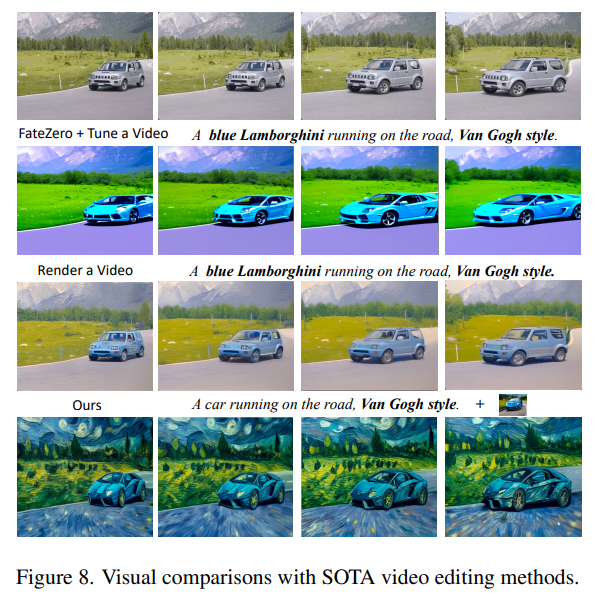artificial intelligence has always faced the problem of producing high-quality videos that seamlessly integrate multimodal inputs such as text and graphics. Currently used text-to-video generation techniques often focus on unimodal conditioning, using only text or images. The precision and control that researchers can exert over the movies created is limited by this unimodal technique, making the videos less adaptable to other tasks. Current research efforts aim to find ways to produce videos with controlled geometry and improved visual appeal.
Salesforce researchers propose MoonShot, an innovative approach to overcome the drawbacks of existing techniques in video generation. With MoonShot, it is possible to condition image and text inputs thanks to the multimodal video block (MVB), which differentiates it from its predecessors. The model can now have more precise control over the generated movies thanks to this important advance: a break from unimodal conditioning.
Previous methods sometimes restricted models to using text or images only, making it difficult for them to capture subtle visual features. With decoupled multimodal cross-attention layers and the integration of spatio-temporal U-Net layers, MoonShot's introduction of the MVB architecture creates new opportunities. Using this method, the model can preserve temporal coherence without sacrificing important spatial features necessary for image conditioning.
Within the MVB architecture, the MoonShot methodology uses spatio-temporal U-Net layers. MoonShot deliberately places temporal attention layers after the cross-attention layer, enabling improved temporal consistency without sacrificing spatial feature distribution, in contrast to conventional U-Net layers modified for video creation. This method facilitates pre-trained image ControlNet modules, giving the model even more control over the geometry of the produced movies.
In MoonShot, decoupled multi-modal cross-attention layers are essential to its functionality. MoonShot offers a more sophisticated approach, unlike many other video creation models that only use cross-attention modules trained on text prompts. The release balances image and text conditions by optimizing additional key and value transformations, especially for image conditions. This results in smoother and better quality video outputs by reducing the load on temporal attention layers and improving the accuracy of describing highly personalized visual notions.
The study team validates MoonShot's performance in various video production tasks. MoonShot continually outperforms other techniques, from custom subject generation to image animation and video editing. The model excels at achieving zero personalization on topic-specific prompts, significantly outperforming non-personalized text-to-video models. Compared to other approaches, MoonShot performs better in image animation in terms of identity retention, temporal coherence, and alignment with text cues.

In conclusion, MoonShot is an innovative approach to ai-powered video production. It is a versatile and powerful model due to its multimodal video block, decoupled multimodal cross-attention layers, and spatio-temporal U-Net layers. Its special ability to condition both text and image input improves accuracy and shows excellent results in a variety of video creation jobs. MoonShot is a fundamental advancement in ai-powered video synthesis due to its versatility in custom subject generation, image animation, and video editing. These capabilities set a new benchmark in the industry.
Review the Paper and Project. All credit for this research goes to the researchers of this project. Also, don't forget to follow us on Twitter. Join our SubReddit of more than 35,000 ml, 41k+ Facebook community, Discord Channeland LinkedIn Grabove.
If you like our work, you'll love our newsletter.
![]()
Madhur Garg is a consulting intern at MarktechPost. He is currently pursuing his Bachelor's degree in Civil and Environmental Engineering from the Indian Institute of technology (IIT), Patna. He shares a great passion for machine learning and enjoys exploring the latest advancements in technologies and their practical applications. With a keen interest in artificial intelligence and its various applications, Madhur is determined to contribute to the field of data science and harness the potential impact of it in various industries.
<!– ai CONTENT END 2 –>






